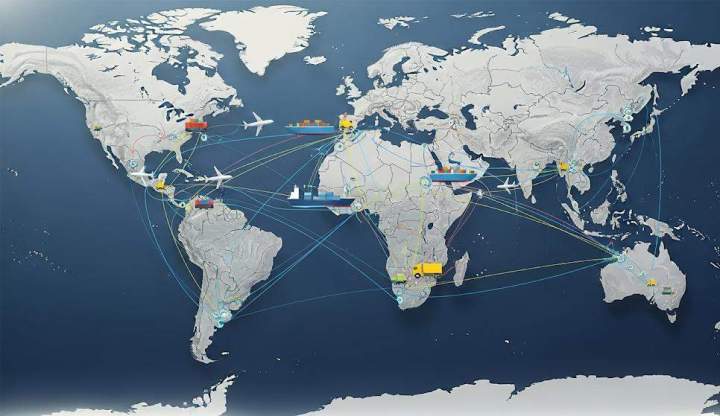Multimodal Transport: The Synergy of Air, Sea, and Land
Air, Sea and ground Transportation Admin / September 21, 2025

Understanding Multimodal Transport
Multimodal transport involves the use of two or more modes of transportation to move goods from origin to destination under a single contract. This system leverages the strengths of each transport mode to enhance efficiency and reduce transit times. For instance, a shipment may travel by sea for the bulk of its journey, then switch to air for expedited delivery to its final destination.
Key Players in Multimodal Transport
The success of multimodal transport relies on collaboration among various stakeholders, including freight forwarders, shipping lines, airlines, and trucking companies. Each player contributes specific expertise and resources, which collectively streamline the entire logistics process. Additionally, customs officials and regulatory bodies play a critical role in ensuring compliance with international shipping laws.
Advantages of Multimodal Transport
Cost Efficiency
One of the primary benefits of multimodal transport is cost savings. By optimizing routes and combining modes, businesses can significantly reduce transportation costs. For example, shipping goods by sea is often cheaper than by air, but integrating air transport for the final leg allows companies to minimize inventory holding costs and respond quickly to market demands.
Environmental Sustainability
Multimodal transport is also more environmentally friendly compared to reliance on a single mode of transport. Shipping by sea generally has a lower carbon footprint than air transport. By strategically using different modes, companies can reduce emissions and contribute to sustainable logistics practices.
Flexibility and Reliability
The flexibility offered by multimodal transport allows businesses to adapt quickly to changing conditions. If a shipping route is disrupted due to weather or political issues, companies can switch to alternative modes of transport without significant delays. This adaptability enhances reliability in delivery schedules, which is crucial for maintaining customer satisfaction.
Challenges in Multimodal Transport
Coordination and Communication
Despite its advantages, multimodal transport is not without challenges. Effective coordination among the various transport modes can be complex. Miscommunication between stakeholders can lead to delays, increased costs, or even loss of goods. Therefore, robust communication channels and real-time tracking systems are essential for ensuring smooth operations.
Regulatory Hurdles
Another significant challenge is navigating the regulatory landscape. Each mode of transport is governed by different rules and regulations, which can complicate the logistics process. Companies must ensure compliance with international trade regulations, customs requirements, and safety standards, which can vary from one country to another.
Infrastructure Limitations
The efficiency of multimodal transport heavily depends on the availability and quality of infrastructure. Poorly maintained ports, outdated rail systems, and inadequate road networks can hinder the seamless transfer of goods between transport modes. Investment in modernizing infrastructure is crucial to support the growth of multimodal logistics.
Technological Innovations Driving Multimodal Transport
Digital Platforms and Tracking Systems
The advent of digital technology has revolutionized multimodal transport. Advanced tracking systems allow real-time monitoring of shipments, providing visibility for all stakeholders involved. Digital platforms can aggregate data from various transport modes, making it easier to manage logistics and enhance decision-making processes.
Automation and AI
Automation and artificial intelligence are also making waves in multimodal transport. Automated warehousing, autonomous vehicles, and AI-driven routing algorithms can optimize operations, reduce human error, and speed up processes. These innovations not only improve efficiency but also enhance safety in logistics.
Blockchain Technology
Blockchain technology is emerging as a game-changer in supply chain management. By providing a decentralized ledger for recording transactions, blockchain enhances transparency and traceability in multimodal transport. This technology can reduce fraud, streamline documentation processes, and improve accountability among stakeholders.
The Future of Multimodal Transport
Evolving Market Trends
The growth of e-commerce and the increasing demand for rapid delivery are driving the evolution of multimodal transport. Businesses are seeking agile supply chains that can adapt to customer expectations for speed and convenience. This trend is likely to encourage further integration of advanced technologies and innovative solutions.
Global Trade Dynamics
As global trade continues to expand, the importance of efficient multimodal transport will only increase. Nations will need to collaborate on infrastructure development, regulatory harmonization, and technological advancements to support seamless logistics networks. The future landscape of transport will likely be characterized by greater cooperation and competition among different modes.
Multimodal transport offers a balanced, efficient way to move goods across the globe. Its flexibility is key in today’s fast-changing markets. With the right strategy, it’s a tool for smarter logistics.